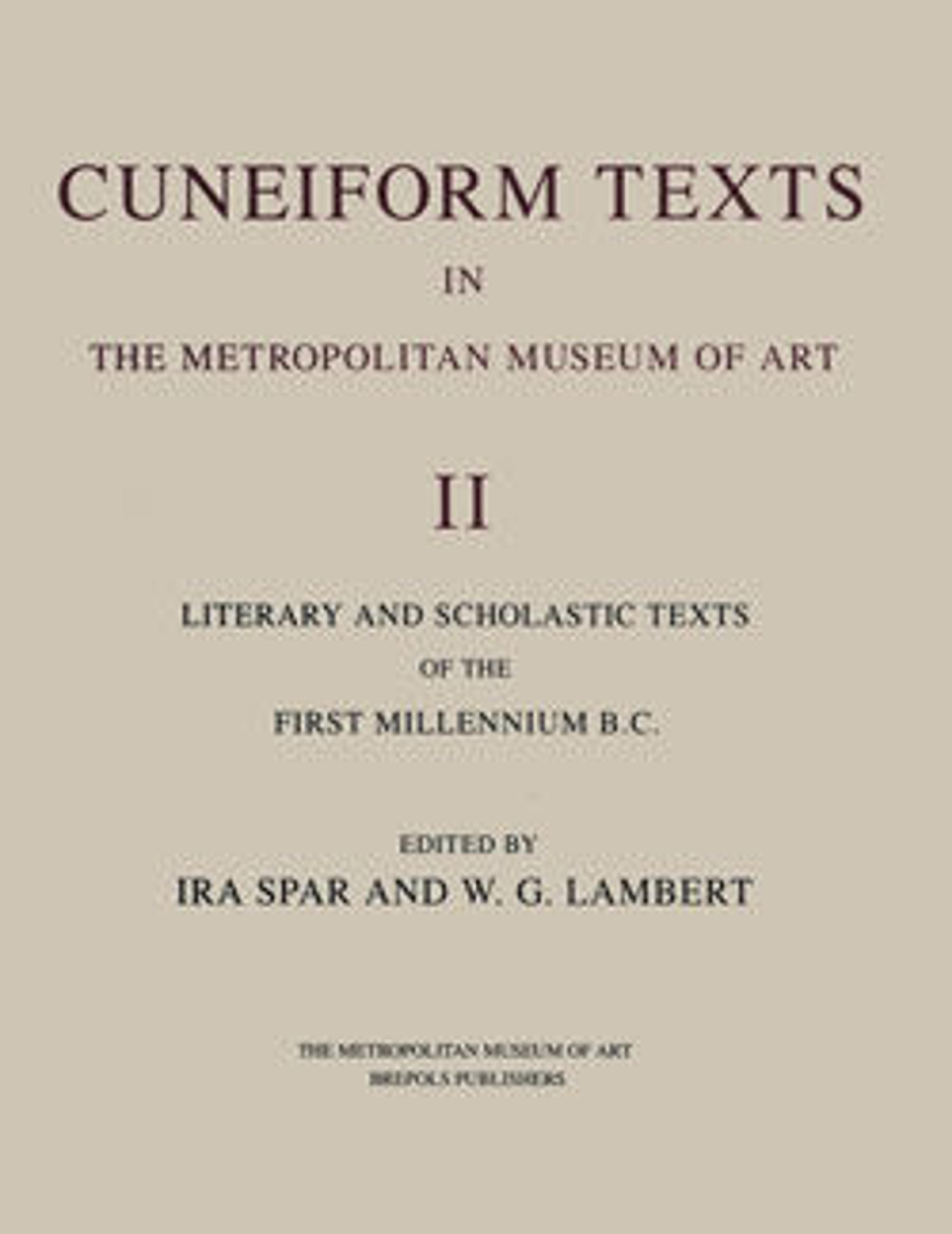Cuneiform tablet: fragment of a liver omen
The invention of writing in approximately 3300 B.C. was one of many developments in administrative technology--including the use of geometric tokens for counting and cylinder seals to guarantee transactions--that accompanied the growth of the first cities and states in southern Mesopotamia. Proto-cuneiform is the name given to the earliest form of writing--pictograms that were drawn on clay tablets. Gradually, the pictograms became abstracted into cuneiform (Latin, "wedge-shaped") signs that were impressed rather than drawn. At its greatest extent, cuneiform writing was used from the Mediterranean coast of Syria to western Iran and from Hittite Anatolia to southern Mesopotamia. It was adapted to write at least fifteen different languages. The last dated cuneiform text has a date corresponding to A.D. 75, although the script probably continued in use over the next two centuries.
This fragment of a clay tablet records prognostications derived from observations of the conditions of the liver of sacrificial sheep – a method of divination that facilitated communication between the divine and human worlds. The text, which reads from left to right, describes different features of the liver and what they mean for the success of an army in battle. Extispicy (liver divination) is a well-known practice in the ancient Near East, and while omens recorded on clay tablets may originally be based upon the combined observation of events and liver features, many divination texts include occurrences that were unlikely to have been observed in nature, indicating that omen lists represent a type of abstract philosophical thinking.
This fragment of a clay tablet records prognostications derived from observations of the conditions of the liver of sacrificial sheep – a method of divination that facilitated communication between the divine and human worlds. The text, which reads from left to right, describes different features of the liver and what they mean for the success of an army in battle. Extispicy (liver divination) is a well-known practice in the ancient Near East, and while omens recorded on clay tablets may originally be based upon the combined observation of events and liver features, many divination texts include occurrences that were unlikely to have been observed in nature, indicating that omen lists represent a type of abstract philosophical thinking.
Artwork Details
- Title: Cuneiform tablet: fragment of a liver omen
- Date: ca. late 1st millennium BCE
- Geography: Mesopotamia
- Medium: Clay
- Dimensions: 2.5 x 2.25 x 1 in. (6.35 x 5.72 x 2.54 cm)
- Credit Line: Purchase, 1886
- Object Number: 86.11.378b
- Curatorial Department: Ancient West Asian Art
More Artwork
Research Resources
The Met provides unparalleled resources for research and welcomes an international community of students and scholars. The Met's Open Access API is where creators and researchers can connect to the The Met collection. Open Access data and public domain images are available for unrestricted commercial and noncommercial use without permission or fee.
To request images under copyright and other restrictions, please use this Image Request form.
Feedback
We continue to research and examine historical and cultural context for objects in The Met collection. If you have comments or questions about this object record, please contact us using the form below. The Museum looks forward to receiving your comments.
